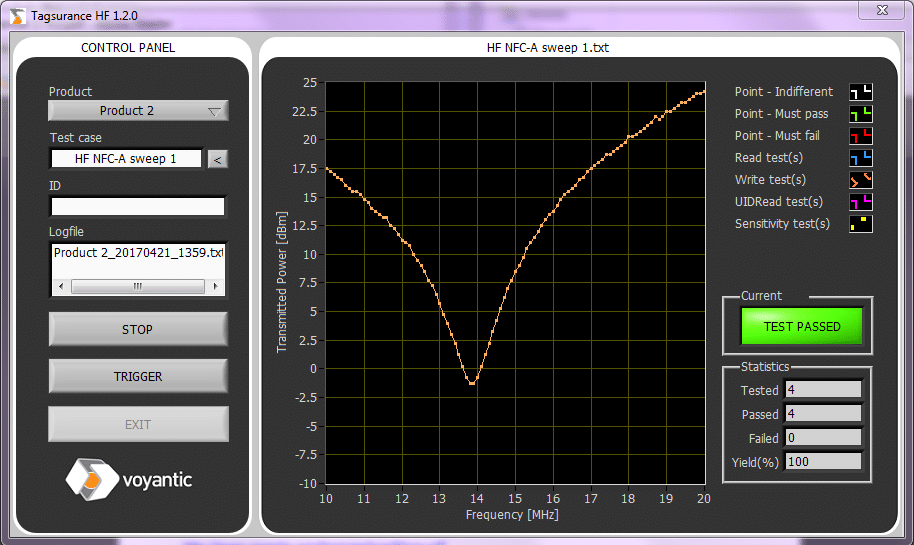Tagsurance® HF Features
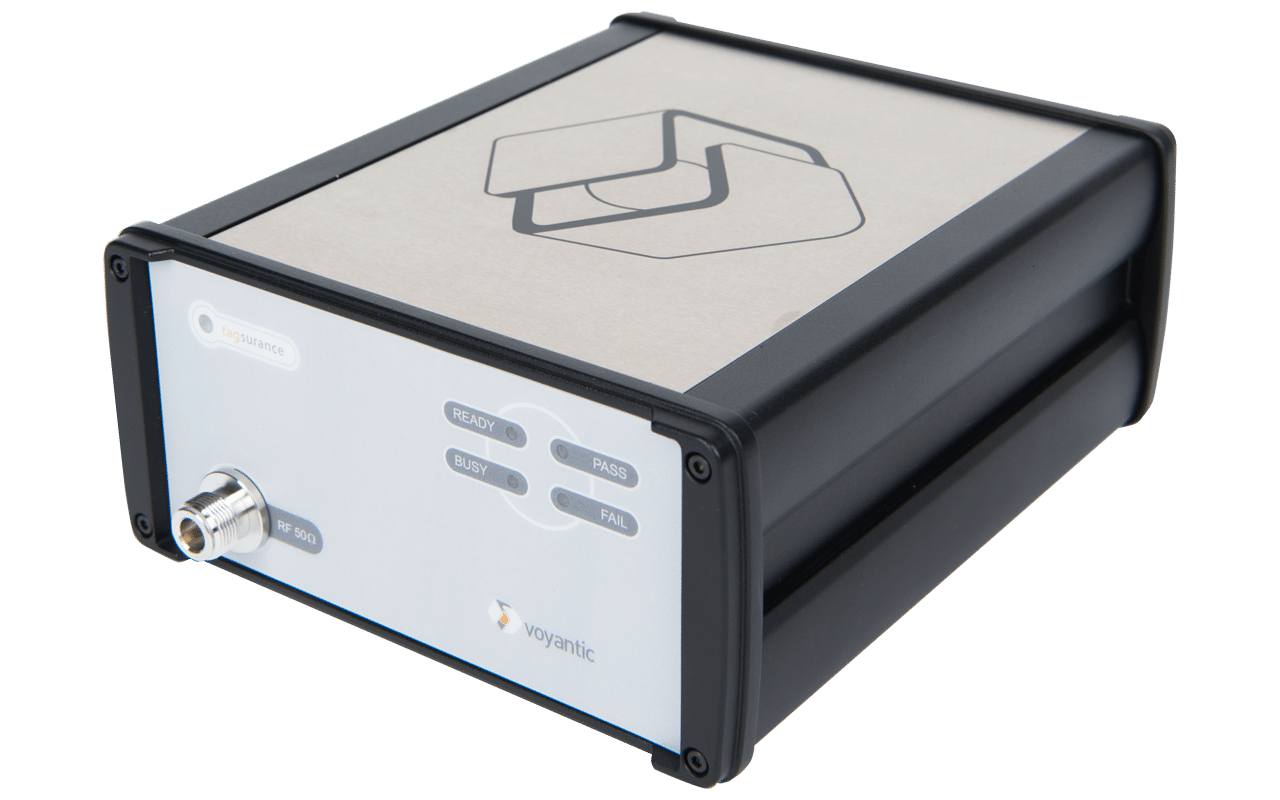
The Tagsurance® HF has two options for the frequency range and three test modes. Different test modes can be combined to create a test sequence that meets the test requirements. Creating a test sequence is optimization between the amount of data provided and the time available for testing.
Tagsurance HF Features
The standard frequency range of 12 MHz – 16 MHz is often sufficient when testing a tag applied on the item intended, or a packaged tag. The extended frequency range is a valuable tool in cases where further processing or the use environment is expected to tune the response. With the extended frequency range of 10 MHz – 30 MHz, the Tagsurance HF provides visibility over the entire operating bandwidth of an inlay or a tag. This allows detecting the variance also far beyond the typical read frequencies.
The operating frequency range of an HF tag is highly dependent on the use case. The reader uses 13.56MHz frequency and this is targeted to be the center frequency of the tag, the frequency, where the tag is most sensitive and least power is required from the reader to wake up the tag in the end
application.
When an HF tag is placed on the material, or near to other tags, the tag frequency response changes. For example in document tagging the individual HF tags resonance frequency is tuned up to 15MHz higher than the reader frequency, to compensate the effect of other tags in the stack and to provide the best application performance.
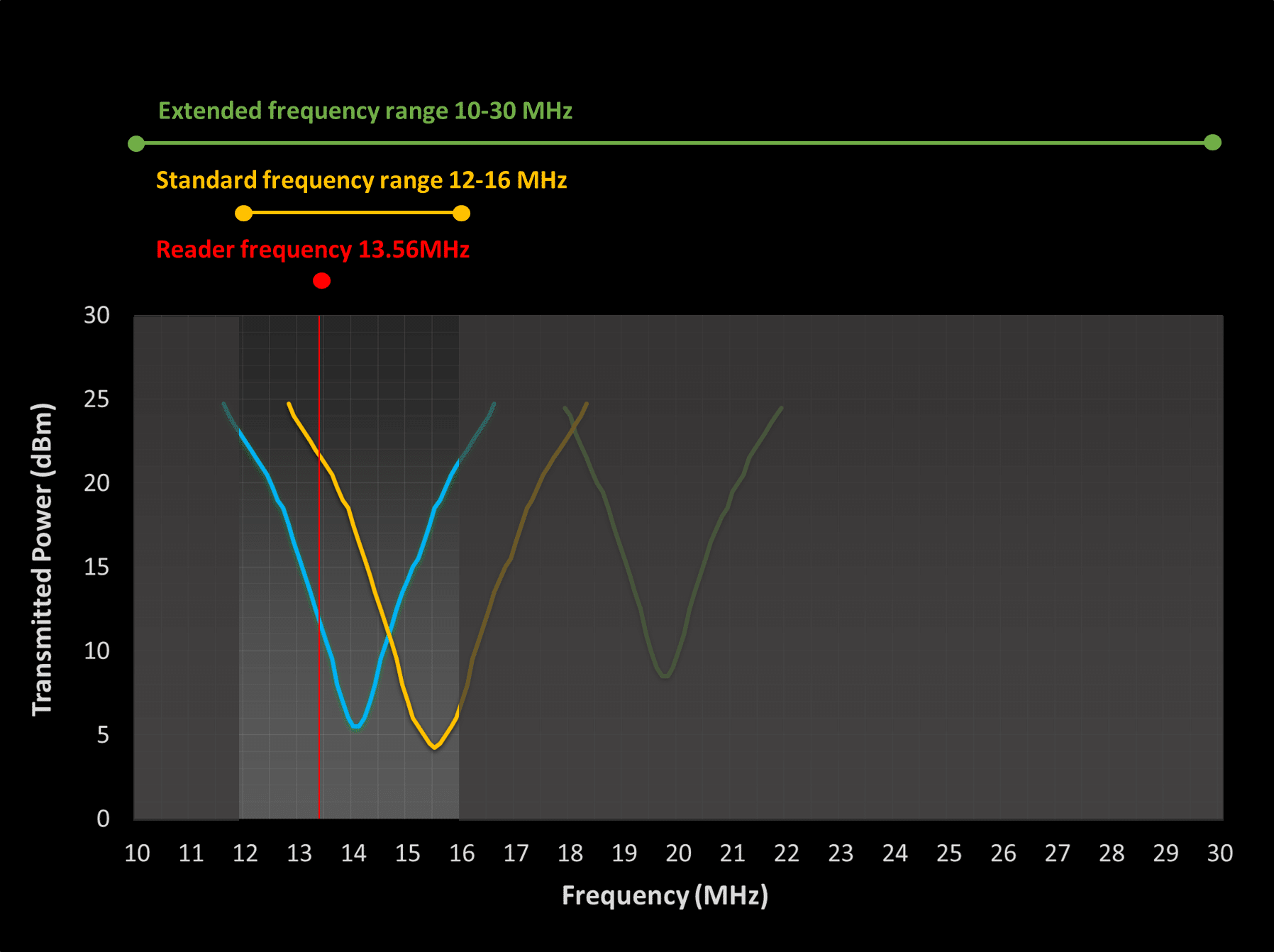
The Point Test function is close to traditional Go-NoGo testing. However, unlike a reader-based test, which is done on 13.56MHz frequency, the Tagsurance HF is able to perform the test on any given frequency, usually the exact resonance frequency of the tag. Using multiple frequency/power combinations enables efficiently testing the active bandwidth by verifying the tag sensitivity on a wide frequency range.
The user can define the number of test points to achieve sufficient accuracy for screening out detuned and low sensitivity tags. The green points in the graphs represent “Must Respond” points, frequency/power combinations where the tag is expected to respond to be approved.
The Point Test mode includes also a UID read test for ISO 15693 and ISO 14443-A tags.
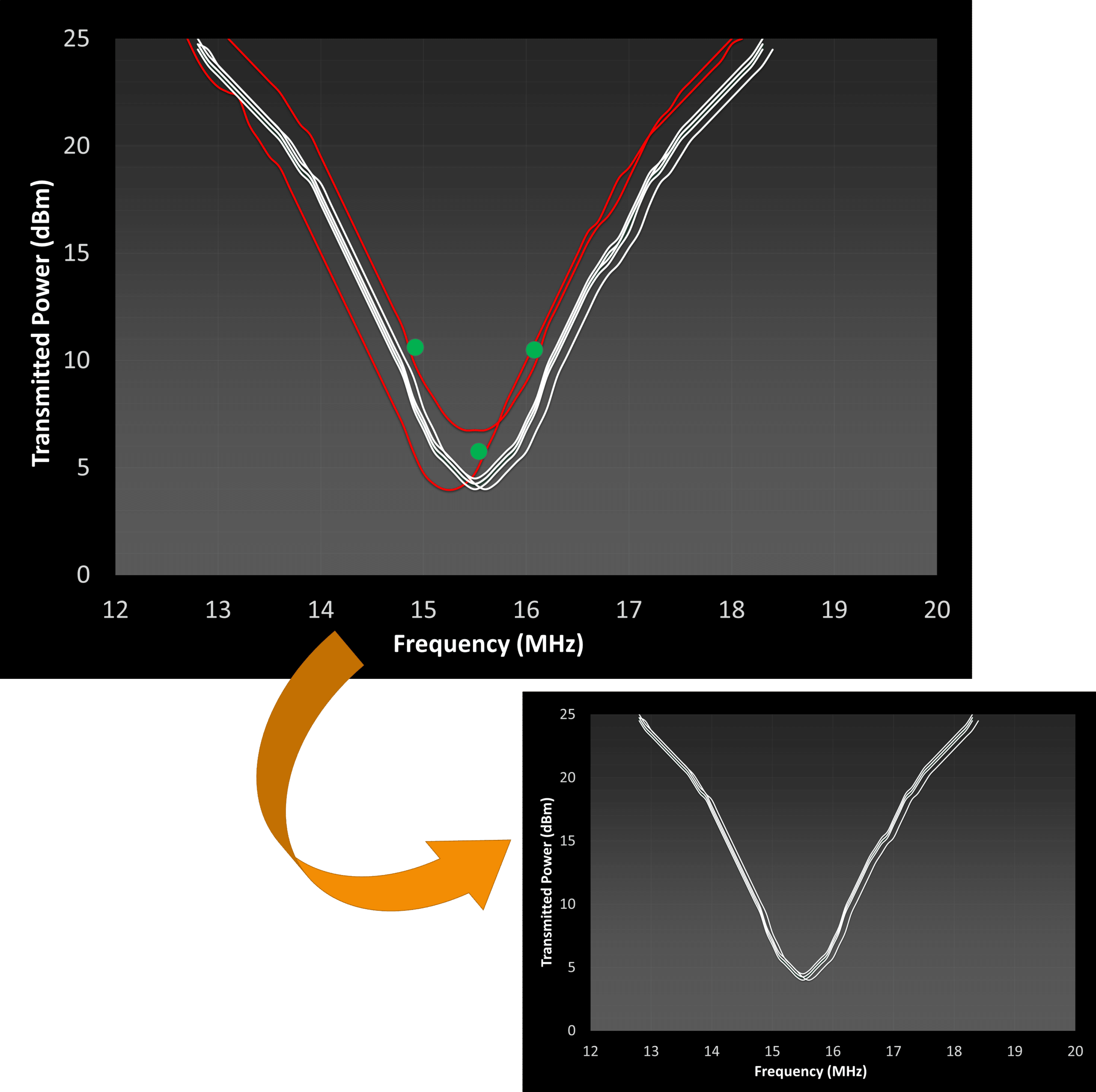
With the Sensitivity Measurement Mode, the Tagsurance HF is able to measure the lowest response power on a defined frequency. The sensitivity can be set to be measured also on multiple defined frequencies.
The test duration is dependent on the protocol used and can be reduced by adjusting the resolution or the power range used in the measurement.
Often the interest is on the variance inside control limits, and the exact measured sensitivity of failed units is not of interest. In this case, narrowing down the power range helps to minimize the test duration.
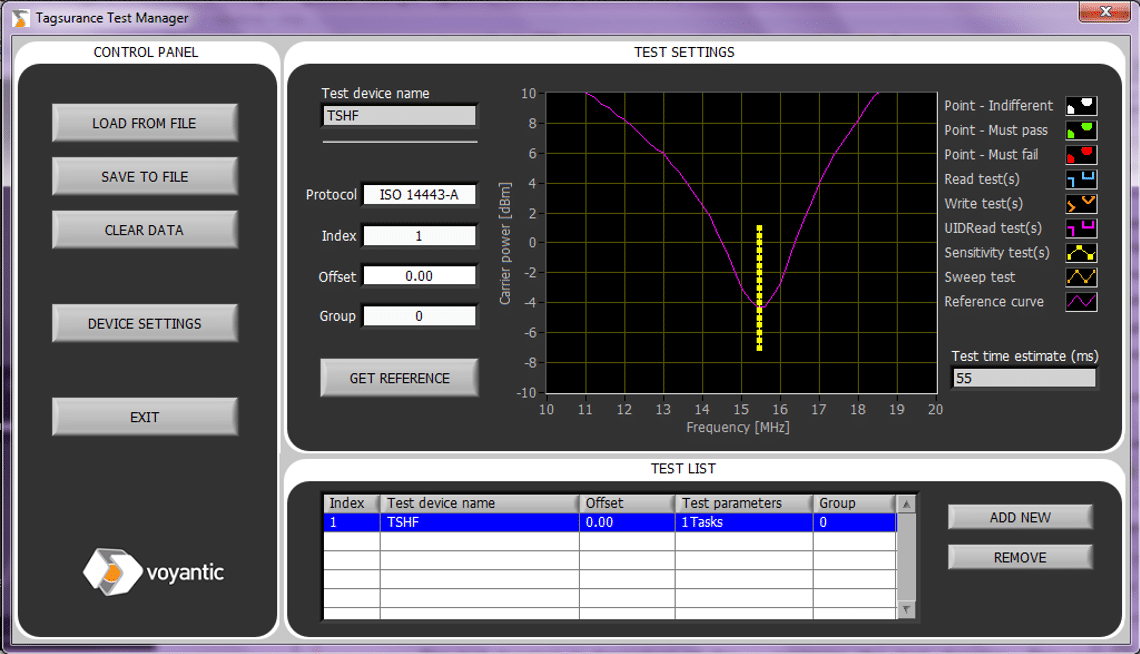
The Threshold Sweep function enables the user to obtain the complete response curve for each tag tested. The frequency range and step for the test are adjustable. The time consumption for this test method is several seconds and dependent on the protocol used.
Threshold sweep mode is intended to be used for sample-based more comprehensive analysis. Based on the information achieved with this test mode, the high-speed production test that uses point test mode or sensitivity test mode is easier to be defined.
